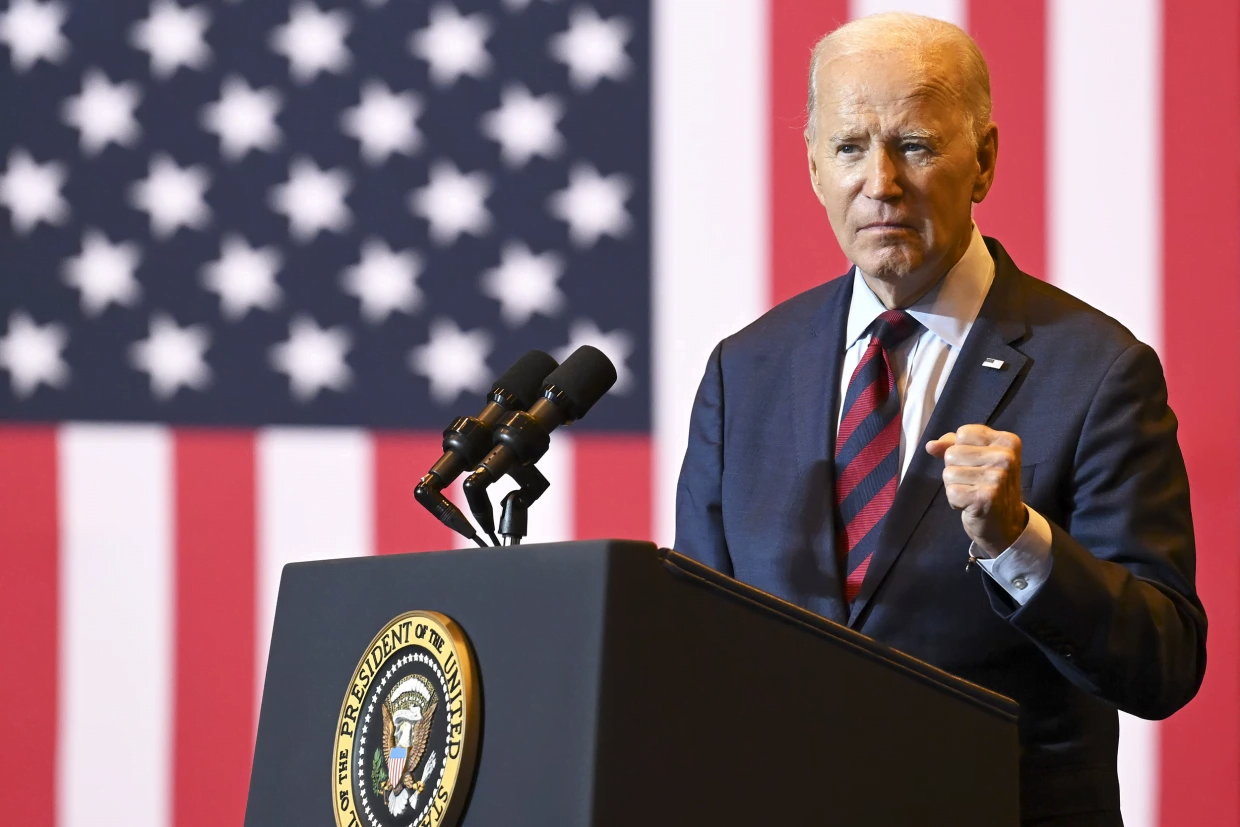The Region Special Report: Has Tehran Crossed America’s Redline?
Regional Reactions to Deadly IRGC-Sponsored Attacks on American Troops in Jordan

By: Rania Kisar
The Middle East was shaken by the news on Sunday that Iranian-sponsored Iraqi militias had killed three U.S. troops and wounded dozens more in an armed drone attack on a U.S. outpost in northeast Jordan, adjacent to the Syrian border. In today’s Region, we survey the range of responses and expectations about the deadly incident from the different quarters of the Middle East.
Iranian Officials and Outlets: Disavowing Iranian Culpability
In the hours after the deadly attack, Iranian government spokesmen sought to disavow Iranian responsibility for the American casualties. Officially, Iran denied involvement in the suicide drone attack at the Al-Tanf Base and other assaults, claiming that the Iraqi militia attackers were acting on their own. This position is clearly meant to maintain Tehran’s plausible deniability and discourage U.S. retaliation directly against Iran itself.
In keeping with this Iranian government narrative, Iranian media outlets refrained from their usual triumphalism about attacks on U.S. targets. Iranian outlets reported a total of ten strikes by proxies from Iraq and Lebanon against U.S. and Israeli positions on January 28, 2024. Different Iranian news sources provided details on these strikes separately, without combining them.
The Islamic Republic News Agency (IRNA) described several attacks, including a drone strike at the U.S. military base at Erbil airport in Iraq, a significant assault on Israel’s Zevulun naval facility near Haifa, and missile attacks in Kiryat Shmona and Shalom in northern Israel. IRNA also reported on Hezbollah targeting Israel’s Birket Risha infantry.
Tasnim News Agency reported on a broad range of attacks. Their coverage included a drone strike at Iraq’s Ain al-Asad Air Base, multiple drone strikes on U.S. bases in Syria, specifically in Khirbat ‘Adnan Village and Rukban District, and a rocket attack on the Conoco Gas Field’s U.S. base in Syria. Additionally, Tasnim documented a drone strike in Al-Shaddadi, Syria, and the drone attack on Israel’s Zevulun Naval Facility, reiterating the missile strikes on Kiryat Shmona and Shalom. The report also briefly mentioned a strike in the Rukban district in southeastern Syria near the Jordanian border, but without particular emphasis.
Jordan: Initially Trying to Claim the Deadly Strike Wasn’t on Jordanian Territory, then Tying it to the Narcotrafficking War on Jordan’s Border

In the immediate aftermath of the attack on Tower 22, Jordanian government spokesman denied that Jordanian territory had been attacked and tried to claim the attack actually took place inside Syria, at the Coalition base a short distance away at Tanf. The Jordanians’ initial narrative was clearly meant to give Jordan the latitude to avoid being embroiled in any subsequent US-Iran escalation.
Al Jazeera highlighted the conflicting statements on the exact location of the strike and whether it is in Syrian or Jordanian territory. The outlet noted that while the United States confirmed the killing of their soldiers in Jordan, for some odd reason, the Jordanian official statement continued to say the base is not in Jordan. The Minister told the official “Al-Mamlaka” channel that “the attack targeting U.S. forces near the Syrian border did not occur inside Jordan,” clarifying that “the attack targeted the Al-Tanf base in Syria.” But the Jordanians were forced to discard this narrative once U.S. President Joe Biden and Secretary of Defense Lloyd Austin publicly said the attack took place at Tower 22 inside Jordan.
Once the Jordanians acknowledged the attack had taken place inside Jordan, their media emphasis shifted to saying that the attack was indicative of Jordan’s long standing warning that it needed more help to secure the violent Jordan-Syria border. Jordanian military analyst, Al-Duwairi said that Jordan has been voicing concerns about these threats emanating from the north and east.
This theme was echoed by Jordanian government sources who told media outlets that Jordan would be requesting an urgent deployment of U.S. Patriot missiles.
Iran’s Syrian Allies: Claiming the Jordan Strikes Showed American Vulnerabilities, Emphasizing American “Occupation” of Syria
In keeping with its narrative that the U.S. military presence in Syria is illegitimate, Assad regime media cast the attack against U.S. targets as a reaction to what Damascus calls the “illegal American occupation” of Syrian territory. Assad regime media went further to claim that the “American occupation” in eastern Syria is opening “security loopholes” for ISIS to infiltrate other parts of the country–alleging, in other words, that ISIS in Syria is an American plot against the Syrian regime.
Al Mayadeen News, broadcasting from Syria, offered a more generalized assessment. Rida al-Basha, the agency’s correspondent in Aleppo, reported that US air defense failures were not limited to the Tower 22 location. He also covered air defense shortcomings at Al Tanf, Conico, and Khirbat Adnan, the latter being described as the most strategically important logistical airbase for US forces. Al-Basha suggested that the United States should scrutinize its air defense systems at the Omar and Shadadi bases. He concluded by stating that the United States has officially reported over 150 of its military personnel as wounded since last week, excluding those killed or wounded today.
Syrian Opposition Forces: Highlighting IRGC Militias’ Preparations to Be Hit by U.S. Retaliation in Syria
On ground, Syrian opposition sources reported a contrasting narrative. The SOHR, specialized in monitoring a wide range of military activities in Syria, reported that the IRGC militia in eastern Syria has taken significant strategic moves. In an effort to evade detection, militia members have evacuated their headquarters and adopted Syrian Army uniforms. Simultaneously, Iranian militias have carried out a major repositioning along the Euphrates River corridor, spanning from Albukamal to Al-Mayadeen within the Deir ez-Zor countryside. This realignment extends to the city of Palmyra in the Syrian desert as well. Furthermore, Iranian militias have withdrawn from key positions, including those near Al-Rahba Castle in the desert east of Deir Ezzor and the security square in the Al-Tammu neighborhood. To enhance their readiness for potential American strikes, they have deployed trucks equipped with missile launchers from Al-Mayadeen to the Ain Ali base near Al-Rahba Fort. January 29, 2024
Regional Arabic Outlets: Reporting on Additional Attacks Against Americans While Linking the Jordan Attack to the War in Gaza
Arabic sources confirmed the Iraqi armed factions strikes on a base housing American forces near Erbil Airport. Al Jazeera reported a source in the Islamic Resistance in Iraq announced the killing of American soldiers by a drone. Sami Abu Zuhri, a leader in Hamas in a statement to Reuters, said “The killing of three American soldiers is a message to the U.S. administration that unless the killing of innocents in Gaza stops, it will face the entire nation.” He added, “The ongoing American-Zionist aggression on Gaza is enough to explode all situations in the region.”
Arab analysts also noted that the attack exposed a significant technical security breach as well as the militias’ precise strike capabilities. The fact that a large drone targeted sleeping quarters and residences of soldiers indicated precise intelligence and guidance systems equipped not just with explosives. The drone came from Syria.
Predicting whether and where the U.S. might retaliate, analysts on various Arab media said the easiest and nearest option for the U.S. is to attack Iranian targets in Syria, which has been done by American forces before without a reaction from the Syrian regime.
The Houthis, meanwhile, claimed that the attack on Tower 22 was “a message to US policy in the region” and represented “the discontent with the American policy in the Arab world.” This narrative supports the Iranian regime’s plausible deniability by depicting the attack as a spontaneous reaction of non-Iranian regional people, as opposed to an element of Tehran’s carefully crafted regional campaign against the U.S. and its allies.
Other significant reactions from key policy makers in the United States and several countries:
Egypt: Egypt affirmed its strong condemnation of any terrorist acts that threaten the security and stability of the Hashemite Kingdom of Jordan, expressing full solidarity with Jordan in this delicate situation… Egypt emphasized the necessity of confronting all forms of terrorism and rejecting all manifestations of violence to ensure the stability of the region.
Israel: Foreign Minister Israel Katz said, “We stand united in our values and battle against a common enemy. Their sacrifice will always be remembered. Rest in peace. Wishing a speedy recovery to the injured.” War Cabinet member (and opposition leader) Benny Gantz called for restraining the ‘Axis of Terrorism’ led by Iran in the Red Sea and the region.
Russia: President Putin’s Middle East envoy Alexander Lavrentiev argued that the United States had brought the Tower 22 attack on itself by meddling in the region. Lavrentiev alleged that the United States had been escalating terrorist activity in the Al-Tanf region in Syria, nearby Tower 22, thereby implying that the deadly attack was the fault of the Americans themselves.
Kurdistan Regional Government of Iraq: KRG President Nechirvan Barzani condemned the “terrorist” attack against American forces in northeastern Jordan. Both he and KRG Prime Minister Masrour Barzani were unequivocal that the attack showed the danger of the Iran-backed militias in Iraq. Their responses implied that the Tower 22 attack was the continuation of the IRGC aggression against the KRG, which involved most recently the deadly IRGC missile attack on Erbil.



